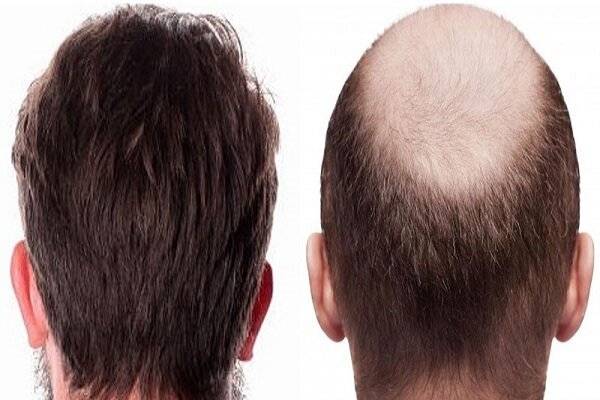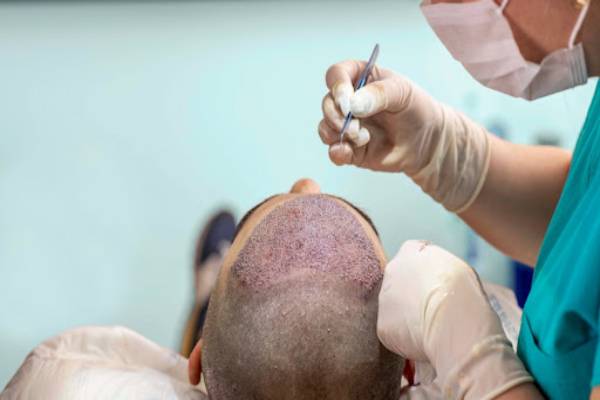Table of Contents
Hair Transplantation: An Overview
Hair transplantation is a cosmetic procedure in which the hair follicles are taken from one area of the head and transferred to the other, making your hair look tidier and fuller. It is an effective and permanent treatment for baldness. This procedure may be costly and require long care and recovery time which should be considered. You can consult with our colleagues at Moj Aramesh Amitis Health Tourism Company to collect more information on hair transplantation. From the beginning to the end of the treatment, our consultants will help you experience the best hair transplantation in Iran. In most cases, several hair transplant sessions may be required overtime to achieve the ideal results. Therefore, hair transplantation is usually suggested only when other hair loss treatments have not been effective. Hair transplantation is performed on an outpatient basis with mild sedation use (optional) and local anesthesia. The scalp is washed with shampoo and your skin is disinfected with an antibacterial agent. The concept of hair transplantation was first discussed in the 1950s when it was discovered that parts of the hair and skin can be transferred from the back or sides of the scalp (areas that are not normally affected by age-related hair loss) to balding areas of the scalp. A hair transplant method that had been used for years involves the replacement of skin grafts with 10 to 15 hair follicles per graft, but this method is no longer commonly used. Instead, hair transplants are performed via the micro-graft method, in which there are only one or two hair follicles taken per graft. This will give you a more natural look.

Important Factors to Consider in Hair Transplantation
When deciding whether to have a hair transplant, different factors need to be taken into account.
- First consider the history of hair loss in your family (Genetically). This is a very important factor in hair transplantation because hair transplantation does not change your genetics.
2.Second, think about recovery time. When you have a hair transplant, you may not look good for about a month. It takes three to five months for the implanted hair to grow back, after which it takes a while for the hair to reach its proper length so that it can return to its natural state. This means that about eight to twelve months after the operation, you will see the best results from your hair transplant.
3.Third, hair transplants can be expensive! Since it is cosmetic surgery, it is not usually covered by most insurance companies.
While considering these factors, it is usually advisable to try other methods of hair loss treatments before hair transplantation. Note that some physicians may offer methods that involve implanting synthetic fibers in your scalp that look like real hair follicles. This can cause serious complications for the patient. Because your body is likely to show an allergic reaction to foreign substances. You can consult with the best cosmetic consultants in The Moj Aramesh Amitis Health Tourism Company to guide you and ensure you about your treatment procedure. Let’s have a little realistic look over this procedure before we go to the details. If you have significant hair loss, special hair loss shampoos, supplements, and mixed products are not helpful for you. This is because when baldness has developed in some areas of the head, the hair follicle is gone and hair growth is completely stopped. As mentioned, there are medicines and medical products that can provide significant results if used in the early stages of hair loss. Medications can slow or stop mild hair loss but do not affect severe hair loss. For those with severe hair loss, hair transplantation is the only approved way to restore hair growth in bald areas. If you are hesitant about having a hair transplant, keep in mind that recent advances in this procedure have been very popular and satisfying among applicants. New hair transplant methods are highly satisfying and also lead to more natural results. In addition, applicants were happy about all costs and expenses!
Hair transplantation can also be used to restore eyelashes, eyebrows, beard hair, chest hair, and to fill and hide scars caused by accidents or surgery, such as facelifts and previous hair transplants. Modern hair transplantation methods can result in a natural look by imitating the original hair growth and do not look artificial at all. This method of hair transplantation is called Follicular Unit Transplantation (FUT). The transplanted hair can be removed in two different ways:
- Tape harvesting
- Follicular Unit Extraction (FUE)
How can I determine if I need a hair transplant?
Your doctor will likely take a physical exam first and ask about your diet, hair care plan, and your medical and family medical history. And may also prescribe tests such as the following:
1- Blood test:
A blood test will ensure your physician that your body is supplied with enough required vitamins for hair growth, as well as not having any disease. Therefore, your doctor may prescribe a blood test for you.
2- Tensile Strength test:
Your doctor gently pulls several hairs to see how many of them will fall out. This will help your doctor determine if you need a hair transplant.
3- Scalp biopsy:
Your doctor will cut samples from the skin or from a few hairs separated from the scalp to examine the hair roots under a microscope. This can help determine whether the infection is causing hair loss.
4- Optical Microscope:
Your doctor may use special tools to examine your hair. An optical microscope helps detect possible hair shaft disorders.

Hair Transplant Procedure Steps
Hair transplants involve the removal of small grafts from the scalp. These grafts will be transferred to the bald area of the scalp. In general, several sessions of surgery may be required to achieve the desired result, and usually, a period of several months of recovery is recommended between each session, and it may even take two years to see the final result. The amount of hair covering your scalp depends partly on the color and texture of your hair. The final result may be more obvious in gray or light-colored hair than delicate and dark-colored hair. The number of transplanted follicles in the first session varies from each individual. But they are 50 on average. In the micro-grafting method, this number can be up to 700 pcs per session. Before the operation, the hair is cut short so that the grafts can be easily accessed and removed (generally several hair follicles clustered next to each other, called grafts). For punch grafts, your doctor may use a tube-like tool, made of carbon sharp steel. To maintain proper blood circulation in the scalp, grafts are placed at an exact distance. Your doctor will be very careful in placing the grafts to ensure that the implanted hair grows in a natural direction. After the hair transplant session, the scalp is sterilized and covered with gauze. The head will be bandaged for a day or two. Some physicians allow patients not to use bandages.
In general, hair transplantation has several steps:
- The first stage is counseling and preparing the patient for hair transplantation. At the beginning of a hair transplant procedure, different tests are diagnosed for the applicant and they see a specialist for a consultation. The surgeon examines the applicant’s scalp, discusses his/her preferences and expectations, advises him/her on the best method (according to the tests performed) and consequences of the surgery.
- The second step is to extract the grafts during hair transplantation. During this stage, the surgeon uses a special tool to extract the graft from the patient’s scalp. These grafts are traditionally extracted from the back and sides of the scalp.
- In the third stage, by extracting the graft, the physician takes useful measures to preserve the grafts for hair transplantation. Once the graft is extracted from the patient’s scalp, it is sterilized, sorted by the number of hair follicles available, and immersed in an active plasma solution that maximizes survival. Special containers with grafts are stored in the refrigerator until the hair transplantation.
- In the fourth stage, when a sufficient amount of graft is extracted, the physician begins hair transplantation using his/he3r desired method.
- The fifth stage is postoperative care. After finishing the main stages of hair transplantation, observing the correct stages of post-implantation care is very important, including washing the hair transplant area and protecting the transplanted hairs. The surgeon will also ask you to visit his/her office or the clinic one day after the hair transplant to check the healing process.
Steps of Hair Transplantation in Iran
Hair transplantation is known as a method for hair restoration in Iran. In this method, hair follicles are transplanted from a dense and thick area to bald or thin areas of the scalp. Hair transplants will be a permanent treatment to restore lost or damaged scalp hair and natural treatment for people with baldness. Hair transplants are also used for other parts of the body such as eyelashes, eyebrows, and beards.




